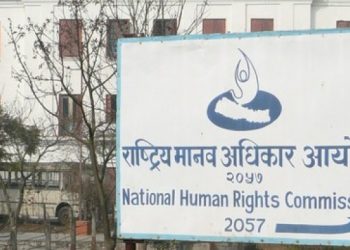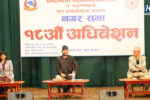India believes in the age-old and reverential wisdom of Vasudhaiva KuTumbakam (i.e. whole world is a single family), wherein, the idiom of supporting succor and refuge to persecuted minorities has been an age-old tradition in the nation’s practice as a state.
It should not be forgotten that every nation has a right to exist and self-aggrandizement and that is exactly what Nepal strives to achieve.
The fractious nature of domestic politics in Nepal has been akin to a Damocles sword which vitiates the benign hilly billy Kingdom’s visage and national narrative outside the confines of its territoriality and South Asia in general.
India and Nepal have had a prolonged tedium of cooperative relations defined by a treaty meant for hydropower fruition for the Nepalese nation.
Protract record of Cordial Ties: Open Border & Deep People-to-People Bonhomie
The nation-State of Nepal is an astutely friendly neighbor of India since its independence from the British Colonial rule, and the religious contiguity between the Princely nation and the Indian democracy goes back for several decades.
The India–Nepal Treaty of Peace and Friendship of 1950 outlines the bedrock of the special relations that exist between India and Nepal.
It’s the Indian blockade of Nepal which in some ways spoiled the broth for a welcoming and benign India-Nepal relationship and regional partnership.
Also, the rigmarole of domestic power shifts and the Constitutional crisis in the recent past have besmirched the relationship between the twin neighbors in South Asia.
It was a rather unfortunate development that India was labeled as a benign hegemonic by some of the microstates of South Asia since the times of the Indian Prime Minister, IK Gujral (1997-98) in the vapid and transformative nineties for the political firmaments of both the states.
Still, a diplomatic unease and inconvenience persists, which is worsened by the instability and the quiche Regimental changes in Kathmandu since the last few months.
Still, the cultural, linguistic and geographical interdependence between both the neighbor has always acted as an effective adhesive for both nations since the historical times of antiquity.
Still, with the Chinese bargaining and sliding into Nepal as a support system the autonomy of SAARC ( South Asian Association for Regional Cooperation), has been undermined and the Chinese have made inroads inside the entrails and the body rubric of the Hilly Billy Kingdom much to the strategic discomfiture of India.
Reset of India-Nepal Ties: In the realm of mutual interdependence & political goodwill
A reset of the Indo- Nepal relationship has to be attempted if the twin‘s interface has to have cordiality and if the partnership is to become consequential for each other.
The people-to-people relationship between the twin nations along with the relationships of kinship have made the bilateral navigate the regional geopolitics and geo-economics in a stride to hold on to each other as historical allies.
PM Modi’s neighborhood first policy brought to the fore the significance of Nepal for the New Delhi denomination and vice versa.
No Indian Prime Minister has ever visited Nepal six times in a few years and this fact itself showcases the Indian diplomatic and political bent of mind to hold true to the hallowed portals of power in Kathmandu.
The ‘Modian Masterstroke’ itself amounted to inviting to his South Asia first policy where-in he invited the South Asian Heads of State to New Delhi for his May 2014 inaugural not even leaving aside the Nawaz Shareef who was the key pontiff in Islamabad at that point of time.
The importance given by New Delhi to South Asia and Kathmandu is nothing but, an astute reflection of the Chakra theories of Diplomacy where-in, the first circle of friends and allied nations happen to be the immediate neighborhood of South Asia and then the rest of the concentric chakras happen to be the West Asia, South Asia and then arrive the nationalities of European nations and finally superpowers such as the USA.
Decoding the Bilateral Bonhomie Barricades
One of the major irritants in the India-Nepal relationship, which adds vitriol to the prized bilateral relationship, happens to be the border dispute, which is a rather unfortunate development heralding bitterness in a historically cooperative partnership & “mutuality” shared by both the South Asian Nation States.
Hari Bansh Jha writes in the Raisina debates of the Observer Research Foundation that, “However, all is not well between Nepal and India, at least at the government-to-government level.
At times, certain differences crop up in the relations between the two countries. Last year in 2020, ties between the two soured after both India and Nepal — one after the other published maps in which they included Kalapani, Lipulekh & Limpiyadhura in their side of the territory.
He further writes, but in its bid to reset the country’s relations with India, the Nepalese Prime Minister, K.P. Sharma Oli directly spoke to PM Modi on the phone to greet him on the occasion of India’s Independence Day on 15 August 2020.”
Still, a diplomatic unease and inconvenience persists, which is worsened by the instability and the quiche Regimental changes in Kathmandu since the last few months.
Thus, the twin nations are ideationally slated to harbor cooperation, mutuality, and understanding bonhomie but that rosy realization requires a pragmatic and realistic reset along with a change of stance by both Kathmandu and New Delhi.
The China Factor & Way Ahead for India-Nepal Bilateral Bonhomie
The China factor has a key role to play here and the poser can be advanced that is Nepal finally ignoring China and courting India?
With the dissolution of the second Parliament under judicial review and the Regimental change from Oli to Deuba, India and China are all set to intervene in the domestic political legerdemain in Nepal.
The combination of the communist parties in Kathmandu along with the visit of the Prime Minister of Pakistan too raised queries in India’s Raisina hill it’s this tight rope walking which bedevils the larger rubric and shakes the mantelpiece of a partnership between both the nations.
As India might not, but other nations can intervene with audacity in Kathmandu and spoil the relationship further vis-a-vis India and Nepal.
Thus, New Delhi and Kathmandu both are having a fresh and overt chance of cementing State-to-State relations through smarter diplomacy, political goodwill through support for democracy, and timely and qualitative delivery of promises and halt projects. This time, New Delhi and Kathmandu must get it right.
The Nepalese Prime Minister talked about the Indian emblem, the border dispute based upon tax collection records along with the larger declaration of rhetoric that the Indian virus is more lethal and harmful than the Chinese virus.
It’s a rather unnerving moment that such a border misunderstanding and miscomprehension too can exist and play its nefarious role in the bilateral relationship between India and Nepal. A few malapropisms cannot erase out a historically sub-set of a relationship between the contiguous neighbors.
One opinion edition in Global Times even went on to the extent of declaring that a three-front war with Nepal, China, and Pakistan being the other side of the fence could be manageable for India.
Such rhetoric needs to be brushed aside, while the development cooperation and Indian aid can be remounted for a reset of a relationship between Kathmandu and New Delhi.
The perception in Kathmandu that New Delhi was backing KP Oli till the very end eroded India’s image. But Prime Minister Narendra Modi’s call to newly elected Nepalese Prime Minister Sher Bahadur Deuba after he won the confidence vote shows that Delhi is willing to cooperate with the new government.
Reviving the Nepalese economy hit hard amid the first & second waves of Covid-19 and rebuilding relations with India are Deuba’s priorities.
Thus, New Delhi and Kathmandu both are having a fresh and overt chance of cementing State-to-State relations through smarter diplomacy, political goodwill through support for democracy, and timely and qualitative delivery of promises and halt projects. This time, New Delhi and Kathmandu must get it right.
(Dr. Manan is a Faculty, International Relations & International Organization at the Indian Institute of Public Administration (IIPA), New Delhi; and Shonit is a Doctoral Candidate at the Central University of Kerala & was a former Research Assistant at IIPA)









Comment